August 8th, 2014 — 4:47pm
 Southland by Nina Revoyr– Having recently read and reviewed a great book mostly about social justice in Los Angeles ( see previously reviewed book in this blog) which included some insight into the history of racial conflicts and violence in this city, I was very receptive to picking up this novel. In fact, it did deal with these subjects with a compelling storyline which focused on the struggles of Japanese-Americans including their relationships with African Americans in Los Angeles over the past 50 plus years.
Southland by Nina Revoyr– Having recently read and reviewed a great book mostly about social justice in Los Angeles ( see previously reviewed book in this blog) which included some insight into the history of racial conflicts and violence in this city, I was very receptive to picking up this novel. In fact, it did deal with these subjects with a compelling storyline which focused on the struggles of Japanese-Americans including their relationships with African Americans in Los Angeles over the past 50 plus years.
The opening setting is the 1990s and Jackie Ishida is a Japanese-American young woman, preparing to enter law school and who also happens to be a lesbian whose grandfather Frank Sakari suddenly passes away. She comes into possession of a forgotten old box in his closet, that had a few clippings, some pictures and a great deal of cash with a note that it should be given to Curtis, a young teenager who worked in his old grocery store that was destroyed in Watts riots. It is well known to the family that those difficult times were very traumatic for many people including Frank not only because of the destruction brought about by riots but because in midst of them, Curtis and 3 younger boys were found locked in the grocery store freezer, having frozen to death. It was thought by some that this murder was the work of an unpopular white police officer who was known for mistreating kids in the neighborhood and was reportedly seen talking to them at the store on day of the tragedy. Jackie is moved to try to find more details. She connects with James Lanier, an African American who was Curtis’cousin. Once she talks to him, they team up to try to find out what really happened, in order to try to bring about some kind of long delayed justice. They embark upon a road trip (mostly limited to the Los Angeles area) where they interview several people who could shed light on this dastardly crime.
As the author follows this duo, she also provides flashbacks to earlier times to allow us to understand not only the characters in some depth but also the social climate of Southland, American, also known as Los Angeles. This includes the history of the Japanese who settled in this area and were sent to internment camps during World War II. We also learn about those young men who enlisted and fought in the War including some of the famed accomplishments of the Japanese American 442 regiment. The story that Jackie and James uncover is more than a study of how race relations played out during the past 50 years but it is also is a very personal moving story about her grandfather. She also finds meaningful insight into herself.
This 2003 novel deservedly won several awards. However, it did not hold me on edge of my seat or qualify as a page turner despite it being a great example of a “cold case being brought to life.” Some of the flashbacks, while necessary for insight into the characters, did seem to slow the flow of the book. A good part of the theme of this book also qualifies as an example of the search for biological roots which I have found in many true life clinical cases as well as a major storyline numerous motion pictures. See my blog about this subject.
Comment » | FG - Fiction General, FH - Fiction Historical, FM - Fiction Mystery
December 14th, 2013 — 1:22am
Gone Girl by Gillian Flynn– It is a very difficult task to review a mystery novel such as this one without revealing the ultimate secrets and discoveries, which develop in the book. This is not a “spoiler alert” as I will not deprive you of the fun of reading this book, which I do recommend that you do
It is a very difficult task to review a mystery novel such as this one without revealing the ultimate secrets and discoveries, which develop in the book. This is not a “spoiler alert” as I will not deprive you of the fun of reading this book, which I do recommend that you do
As the title hints, you will be immediately confronted by the fact that Nick Dunne, one the main characters in the book has come home one day and his wife Amy is nowhere to be found. He assumes she will return shortly but that is not the case. The distraught husband calls the police and the local detectives become characters in the story as they begin to assemble clues. Thanks to modern media this situation becomes a worldwide story, closely followed by newspapers, television and the Internet.
The format of the book is that there are alternate chapters written in the first person through the eyes and thoughts of Nick and Amy. This provides the reader with the back-story on the two protagonists and their relationship as well as insight into the evolving mystery. The great thing about this book is that it is clearly a page-turner that you don’t want to put down. The author gives us characters who pay attention to details but so does she. There are no wasted words. Every incident or piece of action is ultimately related to something else important in the story. There is also authenticity to the various situations. This is especially true when we are dealing with a mystery where the police are involved. It has to be assumed that the readers have watched CSI and a bunch of other TV crime shows so they come to expect DNA analysis and the like.
However in a typical crime show on TV we expect interesting, even fanciful characters but in a top-notch best selling novel we also expect insight into the characters and their personalities, which are realistic and internally consistent. Those of us who probe the human psyche for a living (being a psychiatrist) especially appreciate this. We meet Amy Dunne’s parents and we do come to understand her unique upbringing but that is as far as it seems to take us. Otherwise she is presented as a beautiful, intelligent woman who was a great catch for Nick. Similarly Nick’s persona is invented as some typical guy that everyone might know and like but we really don’t have a clue about the determinants of his psychological development despite meeting father who basically only utters one sentence over and over. We have very little insight into the two stars of the show.
On the other hand I found it quite interesting to see the authors’ detailed description in the acknowledgment section of the warm, rich relationship that she has with her own family. This only suggests the vivid imagination that she has to have in order to construct the characters in her novel who were quite different.
Despite some the above stated reservations we do own a debt of gratitude to the author for providing a very good read.
Comment » | FM - Fiction Mystery
June 12th, 2013 — 6:01pm
 Inferno by Dan Brown (2013). I picked up this book (on my Kindle) after it had just become number one on the NewYork Times Best Seller List. I suspect it will be there for a long time as Dan Brown’s previous best seller Da Vinci Code was Number one for 40 weeks, on the list for 166 weeks and sold 80 million copies. The main character from that book Dr. Robert Langdon, Harvard Professor of Art and Symbolism, is the center of attention of the latest thriller as is Dante, the city of Florence and related subjects. If I were to read a book set in New York, LA, San Francisco or D.C and it used the nooks and crannies with which I was more or less familiar as the basis of a hide and seek, life and death scavenger hunt, that would add to my pleasure of the experience. However, this story goes into exquisite detail of so many churches, monuments, museums special rooms, works of art, secret passages mostly in the city of Florence, Italy. Even though I briefly visited that city less than a year ago I had no familiarity with most of them. I tried to zip through the detailed descriptions of these places and stay with the fascinating story line. Similarly, although I had read Dante’s Inferno many years ago while in college, the secret meaning in the passages which was an important part of this story could have come from the Captain Midnight Decoder ring from my youth. Nevertheless, the premise of the of the book was riveting in that it brought into focus the fact that our planet is on a collision course with extinction by the unrelenting growth of our population. At some point in the not too distant future, we will not be able to sustain ourselves. This raises scientific, ethical and moral issues. We are introduced to the idea that there could be futurists or what are called Transhumanists that would support a radical solution to this dilemma. The book is filled with twists and turns along with some big surprises. Not only are we on the edge of our seats to see how the characters of this story deal with the immediate and future life threatening issues but in the end we come away pondering the questions which are raised. We also hear the words of Dante echoing in our mind as he said, “The darkest places in hell are reserved for those who maintain their neutrality in times of moral crisis.”
Inferno by Dan Brown (2013). I picked up this book (on my Kindle) after it had just become number one on the NewYork Times Best Seller List. I suspect it will be there for a long time as Dan Brown’s previous best seller Da Vinci Code was Number one for 40 weeks, on the list for 166 weeks and sold 80 million copies. The main character from that book Dr. Robert Langdon, Harvard Professor of Art and Symbolism, is the center of attention of the latest thriller as is Dante, the city of Florence and related subjects. If I were to read a book set in New York, LA, San Francisco or D.C and it used the nooks and crannies with which I was more or less familiar as the basis of a hide and seek, life and death scavenger hunt, that would add to my pleasure of the experience. However, this story goes into exquisite detail of so many churches, monuments, museums special rooms, works of art, secret passages mostly in the city of Florence, Italy. Even though I briefly visited that city less than a year ago I had no familiarity with most of them. I tried to zip through the detailed descriptions of these places and stay with the fascinating story line. Similarly, although I had read Dante’s Inferno many years ago while in college, the secret meaning in the passages which was an important part of this story could have come from the Captain Midnight Decoder ring from my youth. Nevertheless, the premise of the of the book was riveting in that it brought into focus the fact that our planet is on a collision course with extinction by the unrelenting growth of our population. At some point in the not too distant future, we will not be able to sustain ourselves. This raises scientific, ethical and moral issues. We are introduced to the idea that there could be futurists or what are called Transhumanists that would support a radical solution to this dilemma. The book is filled with twists and turns along with some big surprises. Not only are we on the edge of our seats to see how the characters of this story deal with the immediate and future life threatening issues but in the end we come away pondering the questions which are raised. We also hear the words of Dante echoing in our mind as he said, “The darkest places in hell are reserved for those who maintain their neutrality in times of moral crisis.”
Comment » | FM - Fiction Mystery
August 3rd, 2011 — 7:31pm
Buy it now on Amazon: The Wings of the Sphinx by Andrea Camilleri
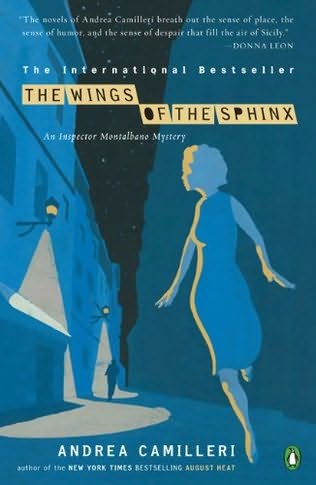
I decided that I could like to sample this popular Italian mystery writer after a friend recommended him to me. On the second page of the book there is a picture of the fifty something author smoking a cigarette and looking very tough, much as I pictured the fifty something Inspector Montalbano. The author gives us glimpses into the thinking of the Italian police detective as he obsesses whether or not to call his girl friend or is solving the crime which is on his plate. While I did not know the locale of the setting of this book, one easily get a feeling for the Italian atmosphere by the names of streets and towns as well as the various meals which are consumed. We learn that the police department doesn’t have enough gasoline assigned to it so the various policemen at times have to use their own cars and even pay for the gas. The story line mentions an actual recent controversial government reform which is also explained in a note at the end of the book. That is a relaxation of the requirements for the right to bear arms and led to people feeling justified to shoot anyone who is burglarizing their house or whom they feel they might be threatened by and have to shoot in self-defense. The English translation captures the accent of some of the characters as one might try to record a Brooklyn accent. Naturally, Inspector Montalbano is very clever but very human and certainly not larger than life. The plot held my interest but it only took about 200 pages of pocketsize book to resolve which makes for quick easy and relatively light reading. Inspector Montalbano and author Camilleri do keep busy as there are at least ten other books in this series.
Comment » | FM - Fiction Mystery
August 16th, 2010 — 7:34pm
 Summer’s Lease
Summer’s Lease by John Mortimer, Penguin Books, 1988
by John Mortimer, Penguin Books, 1988
If you want some good summer light reading, this book is for you, especially if you will be vacationing in Italy and renting a lovely villa. This is just what Molly Pargeter, the main character of this book did with her husband and her three girls.. Her father, a columnist for a British newspaper and a self proclaimed ladies man also came along. Not surprising, Molly found more than she expected, hence your summer mystery. Molly usually handled all the details of their summer rental and naturally has a great deal of curiosity about the owner of the villa and his family. She is also s dying to find out why did the owner specify that he wanted renters with three children, all girls. Then there is the strange occurrence of the water being unexplainably being drained out of their pool as well as of the pool of a neighbor’s pool. The difference being, in the later case the dead body of Mr. Fixit, the handyman was found at the bottom of it. This book was published 22 years ago but it still makes a good summer reading now in the 21st century. John Mortimer is a veteran British author who has successfully written for the movies and television. The book will fit nicely in your summer bag, pocket, Nook or Kindle and give you a good summer read.
Comment » | FM - Fiction Mystery
July 25th, 2010 — 2:31am
 The Girl Who Kicked the Hornet’s Nest
The Girl Who Kicked the Hornet’s Nest is the third of a trilogy of books written by Mr. Larsson and in my opinion the best of the trio. It is a continuation of the first two books, The Girl with the Dragon Tattoo
is the third of a trilogy of books written by Mr. Larsson and in my opinion the best of the trio. It is a continuation of the first two books, The Girl with the Dragon Tattoo and The Girl Who Played with Fire
and The Girl Who Played with Fire . You will best appreciate it if you have read the others and be familiar with the main characters and the ongoing storyline. However, this last book is the one to read if you only reading one, as there is an attempt to summarize some of the previous plots but this will not capture all the intrigue of the earlier books. In the third book there are some new nefarious villains and lots of police types, some good and some not so good. There is a complicated plot, several murders and a great courtroom scene. The reader learns about Sapo, a secret law enforcement agency and an ultra secret component of that agency, as well as a special government agency mandated to prosecute threats to the Swedish constitution. It all seems unfamiliar but ultimately understandable as the plot unfolds. It might be the same if a non-American reader were reading a novel with a convoluted plot, which involved the FBI, secret components within the CIA and actions by the Attorney General of the United States. We would understand the organizations, might believe that they could do secret horrific things depicted in the book but yet also realize that we are most probably dealing with the imagination of the author.
. You will best appreciate it if you have read the others and be familiar with the main characters and the ongoing storyline. However, this last book is the one to read if you only reading one, as there is an attempt to summarize some of the previous plots but this will not capture all the intrigue of the earlier books. In the third book there are some new nefarious villains and lots of police types, some good and some not so good. There is a complicated plot, several murders and a great courtroom scene. The reader learns about Sapo, a secret law enforcement agency and an ultra secret component of that agency, as well as a special government agency mandated to prosecute threats to the Swedish constitution. It all seems unfamiliar but ultimately understandable as the plot unfolds. It might be the same if a non-American reader were reading a novel with a convoluted plot, which involved the FBI, secret components within the CIA and actions by the Attorney General of the United States. We would understand the organizations, might believe that they could do secret horrific things depicted in the book but yet also realize that we are most probably dealing with the imagination of the author.
One of the main characters is Mikael Blomkvist a crusading journalist who was an editor and one of the founders of the magazine Millennium with whom the author perhaps identified. An Internet search about real life author Stieg Larsson reveals that he was a journalist who founded the Swedish magazine Expo and was a life time opponent of fascists, neo Nazis and the extreme right wing in Sweden. He gave lectures about right wing extremists at Scotland Yard and lived under constant threat from right wing violence. When neo-Nazis murdered a labor-union leader in his home in 1999 in Sweden, the police discovered photos of and information about Larsson and his lifetime companion Eva Garbrielson in the murderer’s apartment. It was reported that the reason Larsson and Garbrielson never married or registered as a domestic couple was because they would have to officially report their address and might be endangered by doing so Larsson also wrote a book for the Swedish Union of Journalists of instructions on how journalists should respond to threats. It is easy to see that many of the experiences Mikael Blomkvist in Larsson’s novel could have come from the author’s experience or concern’s about what could really happen to a crusading journalist. Another reason I suspect Larsson identified with his character of Blomkvist and might have wanted to be like him, because he is depicted as a very smart cool guy with the highest journalist ethics. Also, quite a few of the women characters in this book and the previous two were very attracted to him and ended up in bed with him.
While not the main focus of the book, there are clear themes of sexual freedom and feminism which reflect the more openness in Sweden in dealing with all aspects of these issues. Berger an important woman editor in the book is very comfortable having a sexual relationship with Blomkvist although she is happily married with a very good sexual relationship with her husband who accepts her attraction and frequent beddings with her fellow journalist. A “muscular” but very attractive policewoman is an important lover of Blomkvist. There are descriptions of people comfortably in lesbian, gay and threesome relationships, which come up as side issues although not driving the story. Trafficking in young girls was an important part of the plot of the second book and derivatives of this situation continue into the final book of the trilogy. The “Girl” is Lisabeth, is a thin small boned young women, who has been sexually abused, is bisexual but yet constantly overcomes powerful men by her brain and her physical prowess. This is a young woman triumphing over her own abuse, which is a victory for herself, all women and obviously for a better society.
Whether it is the characters themselves, the enormity of the plot or the complicated mysteries that need to be solved by the police and the journalists, Stieg Larsson has captured the imagination of more than 20 million readers in 41 countries. In 2008 he was the second best selling author in the world. His untimely death by a heart attack in 2004 at the age of 50, before any of his novels were published, robbed the world of a talented author. Although he may further live on through his work, as I understand that there were some unpublished, unfinished manuscripts in his computer when he died, which might have the making of at least one novel and maybe more.
Comment » | FM - Fiction Mystery
July 16th, 2010 — 2:53am
The Girl Who Played with Fire by Stieg Larsson 
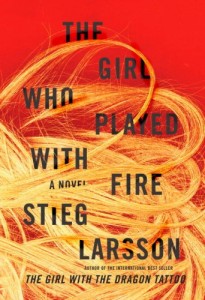 This is the second of three mystery novels written by Stieg Larsson who presented them to his publisher shortly before he died in 2004. It’s success in sales is no doubt at least in part due to the ride on the coattails of the first published novel, The Girl with the Dragon Tattoo
This is the second of three mystery novels written by Stieg Larsson who presented them to his publisher shortly before he died in 2004. It’s success in sales is no doubt at least in part due to the ride on the coattails of the first published novel, The Girl with the Dragon Tattoo although in my opinion it is not as crisp and gripping as the first novel. Since it was originally written in the author’s native language many names of characters and places are in Swedish which requires some concentration to keep track and is a distraction. It also seems to be a little more slow moving than the earlier story. The author takes time to describe details of things which ultimately don’t seem to make a difference to the plot or the movement of the story such as the exact layout of a street or a room of a house. However there is also a great deal of page turning suspense.
although in my opinion it is not as crisp and gripping as the first novel. Since it was originally written in the author’s native language many names of characters and places are in Swedish which requires some concentration to keep track and is a distraction. It also seems to be a little more slow moving than the earlier story. The author takes time to describe details of things which ultimately don’t seem to make a difference to the plot or the movement of the story such as the exact layout of a street or a room of a house. However there is also a great deal of page turning suspense.
The story continues where the first novel left off with a main focus on the two main characters Mikael Bloomkvist a journalist and “the girl” Lisapeth Salander. The journalist is involved in a plan to publish an expose, which came his way about a sexual trafficking in young girls, which involved politicians and police among others. There are multiple murders and “ the girl” becomes centrally involved in this situation.. The plot and the developing murder mysteries that develop are quite original and involve Mikael and Lisapeth as well as a new group of police and bad guys. More than a few times the plot is moved along by a coincidence such as one character who happened to be visiting someone when he heard one side of a phone call which was led to important developments. There was another instance when one character on an unexplained impulse picked up another character’s cell phone that was on the desk when he stepped out of the room and detected a phone call that he had made at a particular time which provided key information. These literary devices would seem to be short cuts that indicate some weaker writing than the first novels. Some of the imagery in the book effectively conjures up some well known scenes in popular movies of men who are in humanly strong and one scene where a character arises after almost certain death and burial.
In the end it is Lisapeth Salander who is the main focus of the story. She is a fascinating character who is not quite a lesbian although she comfortably has sex with women, not quite autistic or mentally ill although she grew up with few friends, rarely cracks a smile and was put away in school for disturbed children as a youngster, not at all solidly built with a very thin child like build although she physically beat up several powerful men. She is one of the world’s best computer hackers with a photographic memory who will never forget a detail that she reads and will never forget any one who mistreats her or people that she actually cares about.
I look forward to reading about her in the third and final novel. I also will be very interested to see how she is depicted and who will play her in the series of movies based on these novels which are out now.
Comment » | FM - Fiction Mystery
July 9th, 2010 — 2:51am
Buy now on Amazon: The Girl with the Dragon Tattoo
Stieg Larsson, the author, died in 2004 shortly after delivering to his publisher the manuscripts for this book (originally in Swedish of course) and two novels he subsequently wrote which I have not yet read. I also have not yet seen the Swedish movie of this story. I also understand there is an English movie soon to be released. The plot is basically a mystery that needs to be solved. One of the main protagonists of the novel is Mikael Bloomkvist, Swedish financial journalist, who as we meet him has just been convicted of libel for trying to expose a wealthy industrialist for his shady corrupt dealings. He thought that he had the evidence to expose him but he couldn’t produce it. His notoriety leads him to the Vanger family and sets him on his quest to solve a mystery, which involves a kidnapping, and much more. As the story develops there are lots of members of this family of whom initially it is a little hard to keep track. Many of the names and places and even small locations are Swedish names, which also threw me for a small loop. However, it really doesn’t distract from the story and Bloomkvist’s curiosity about this mystery. There are surprises with twists and turns, which are expected and appreciated in this genre. It is also interesting to reflect on the sexual mores of the country where the story takes place in that heterosexual casual sex among good friends without a romantic relationship is easily accepted. The story also encounters some perverted crimes that are spelled out in great detail. The author obviously either had a very vivid imagination or sadly enough he could have just taken these descriptions from the periodic reports of such crimes that are reported in the media. By far the most interesting character in the book is the girl with the dragon tattoo herself, who as a youth is shown to have had significant mental problems somewhere between being the product of a deprived childhood with sexual abuse and someone being on the autism spectrum. Now as a young woman she clearly has residual personality issues but is able to use her photographic memory and computer skills to play an important role in the solving of the mystery. She also is presented as an intriguing woman to some of the men in the story as well as to the readers. I understand that both she and the journalist will appear in the subsequent novels. Larsson who himself was magazine editor with particular politically leanings did seem to have a good feel for the subject of his novel and wrote in an authentic manner. This was a very good read and I look forward to his subsequent books.
Comment » | FM - Fiction Mystery
 Southland by Nina Revoyr– Having recently read and reviewed a great book mostly about social justice in Los Angeles ( see previously reviewed book in this blog) which included some insight into the history of racial conflicts and violence in this city, I was very receptive to picking up this novel. In fact, it did deal with these subjects with a compelling storyline which focused on the struggles of Japanese-Americans including their relationships with African Americans in Los Angeles over the past 50 plus years.
Southland by Nina Revoyr– Having recently read and reviewed a great book mostly about social justice in Los Angeles ( see previously reviewed book in this blog) which included some insight into the history of racial conflicts and violence in this city, I was very receptive to picking up this novel. In fact, it did deal with these subjects with a compelling storyline which focused on the struggles of Japanese-Americans including their relationships with African Americans in Los Angeles over the past 50 plus years.
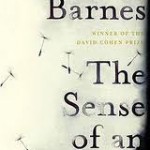

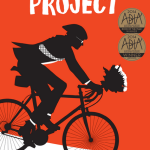


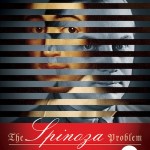
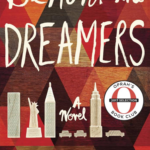


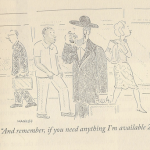




 Inferno by Dan Brown (2013). I picked up this book (on my Kindle) after it had just become number one on the NewYork Times Best Seller List. I suspect it will be there for a long time as Dan Brown’s previous best seller Da Vinci Code was Number one for 40 weeks, on the list for 166 weeks and sold 80 million copies. The main character from that book Dr. Robert Langdon, Harvard Professor of Art and Symbolism, is the center of attention of the latest thriller as is Dante, the city of Florence and related subjects. If I were to read a book set in New York, LA, San Francisco or D.C and it used the nooks and crannies with which I was more or less familiar as the basis of a hide and seek, life and death scavenger hunt, that would add to my pleasure of the experience. However, this story goes into exquisite detail of so many churches, monuments, museums special rooms, works of art, secret passages mostly in the city of Florence, Italy. Even though I briefly visited that city less than a year ago I had no familiarity with most of them. I tried to zip through the detailed descriptions of these places and stay with the fascinating story line. Similarly, although I had read Dante’s Inferno many years ago while in college, the secret meaning in the passages which was an important part of this story could have come from the Captain Midnight Decoder ring from my youth. Nevertheless, the premise of the of the book was riveting in that it brought into focus the fact that our planet is on a collision course with extinction by the unrelenting growth of our population. At some point in the not too distant future, we will not be able to sustain ourselves. This raises scientific, ethical and moral issues. We are introduced to the idea that there could be futurists or what are called Transhumanists that would support a radical solution to this dilemma. The book is filled with twists and turns along with some big surprises. Not only are we on the edge of our seats to see how the characters of this story deal with the immediate and future life threatening issues but in the end we come away pondering the questions which are raised. We also hear the words of Dante echoing in our mind as he said, “The darkest places in hell are reserved for those who maintain their neutrality in times of moral crisis.”
Inferno by Dan Brown (2013). I picked up this book (on my Kindle) after it had just become number one on the NewYork Times Best Seller List. I suspect it will be there for a long time as Dan Brown’s previous best seller Da Vinci Code was Number one for 40 weeks, on the list for 166 weeks and sold 80 million copies. The main character from that book Dr. Robert Langdon, Harvard Professor of Art and Symbolism, is the center of attention of the latest thriller as is Dante, the city of Florence and related subjects. If I were to read a book set in New York, LA, San Francisco or D.C and it used the nooks and crannies with which I was more or less familiar as the basis of a hide and seek, life and death scavenger hunt, that would add to my pleasure of the experience. However, this story goes into exquisite detail of so many churches, monuments, museums special rooms, works of art, secret passages mostly in the city of Florence, Italy. Even though I briefly visited that city less than a year ago I had no familiarity with most of them. I tried to zip through the detailed descriptions of these places and stay with the fascinating story line. Similarly, although I had read Dante’s Inferno many years ago while in college, the secret meaning in the passages which was an important part of this story could have come from the Captain Midnight Decoder ring from my youth. Nevertheless, the premise of the of the book was riveting in that it brought into focus the fact that our planet is on a collision course with extinction by the unrelenting growth of our population. At some point in the not too distant future, we will not be able to sustain ourselves. This raises scientific, ethical and moral issues. We are introduced to the idea that there could be futurists or what are called Transhumanists that would support a radical solution to this dilemma. The book is filled with twists and turns along with some big surprises. Not only are we on the edge of our seats to see how the characters of this story deal with the immediate and future life threatening issues but in the end we come away pondering the questions which are raised. We also hear the words of Dante echoing in our mind as he said, “The darkest places in hell are reserved for those who maintain their neutrality in times of moral crisis.”


 This is the second of three mystery novels written by Stieg Larsson who presented them to his publisher shortly before he died in 2004. It’s success in sales is no doubt at least in part due to the ride on the coattails of the first published novel,
This is the second of three mystery novels written by Stieg Larsson who presented them to his publisher shortly before he died in 2004. It’s success in sales is no doubt at least in part due to the ride on the coattails of the first published novel,